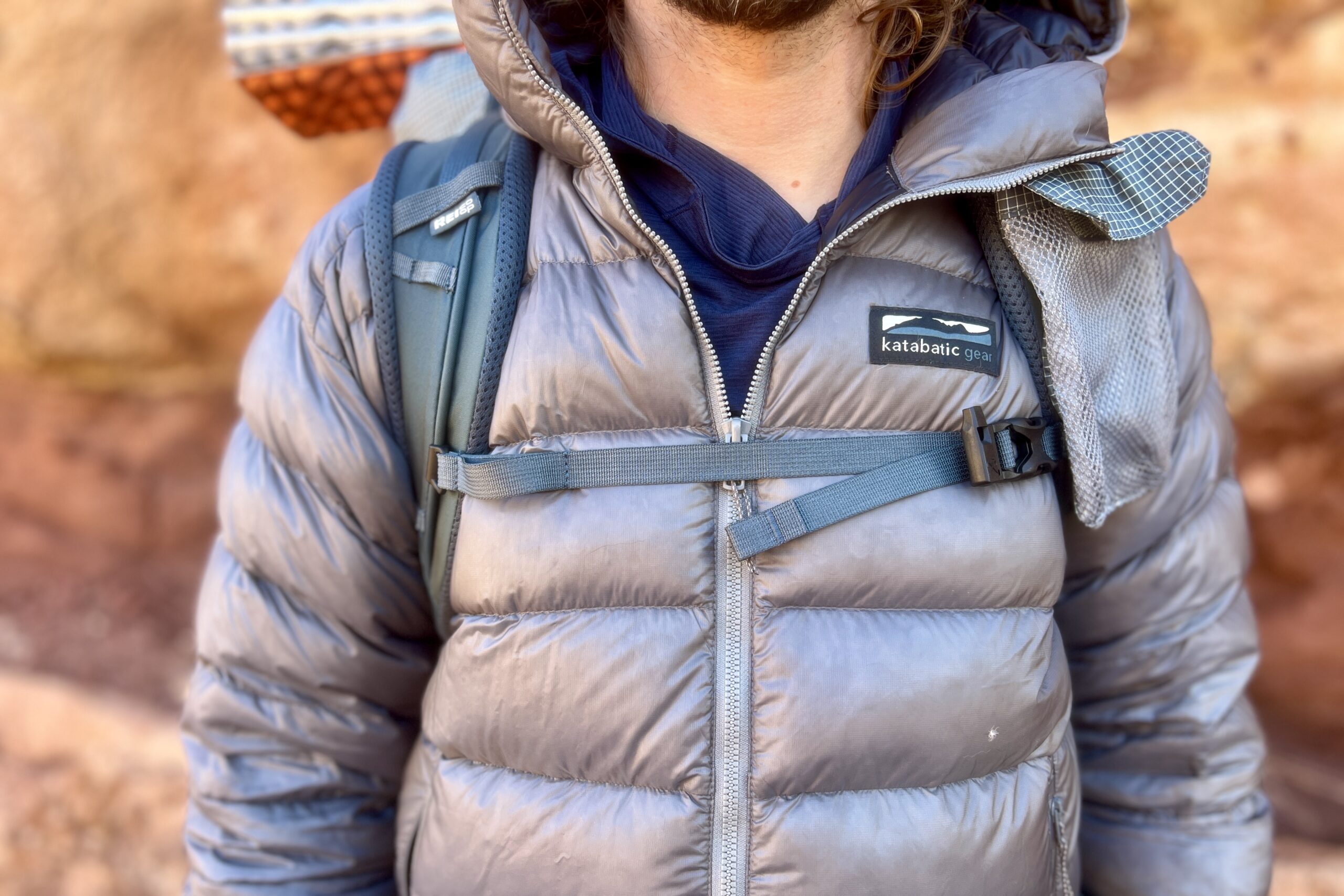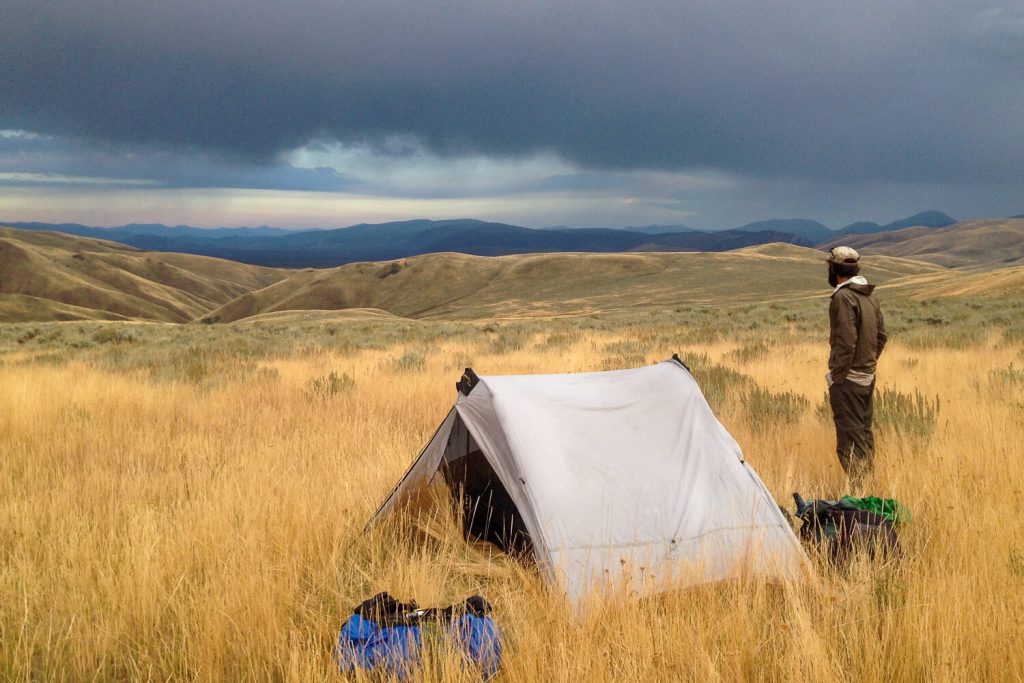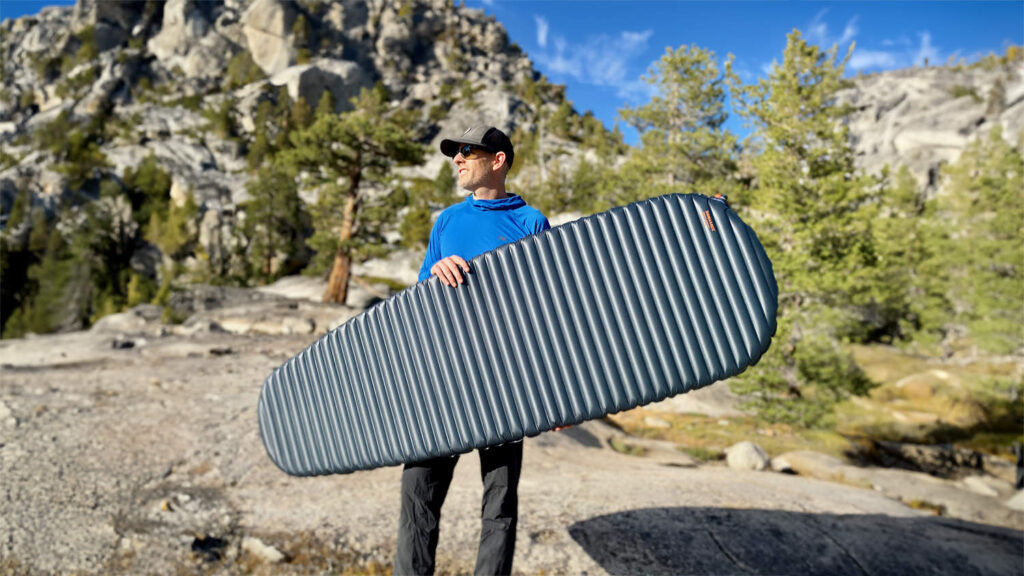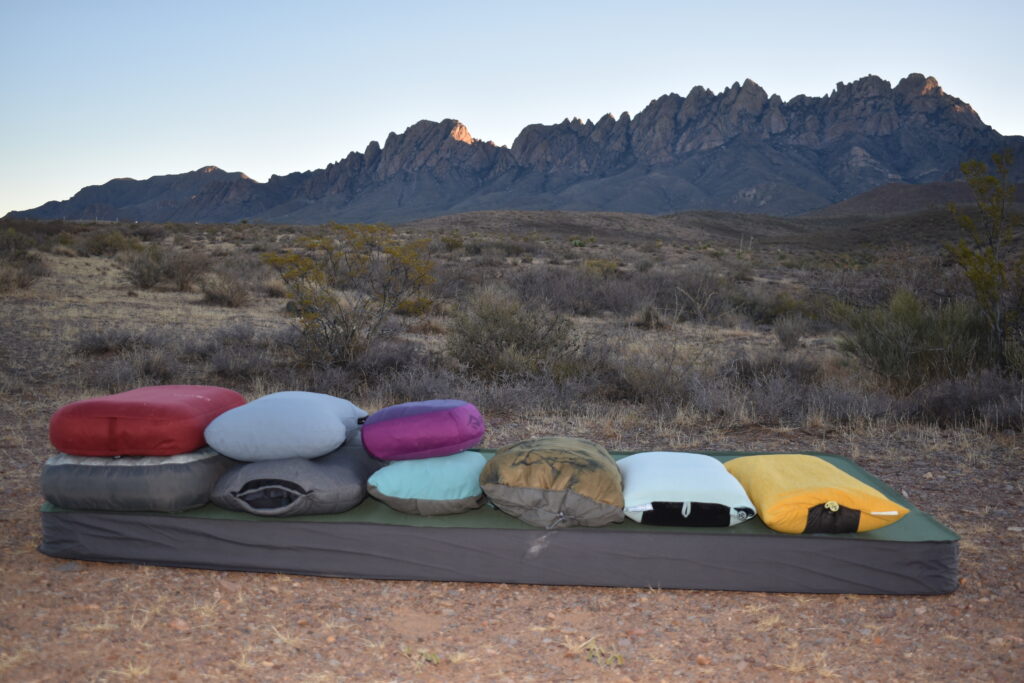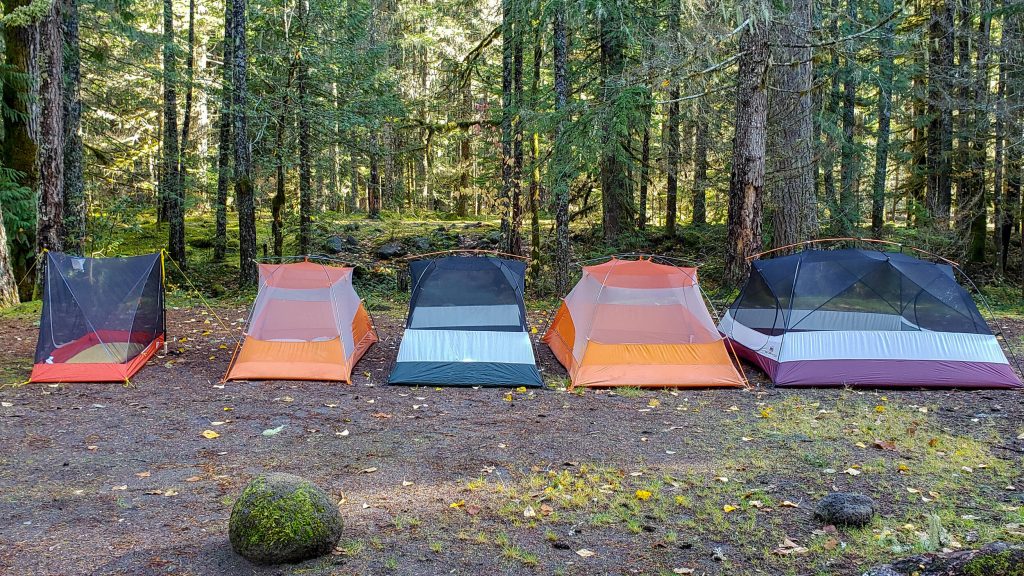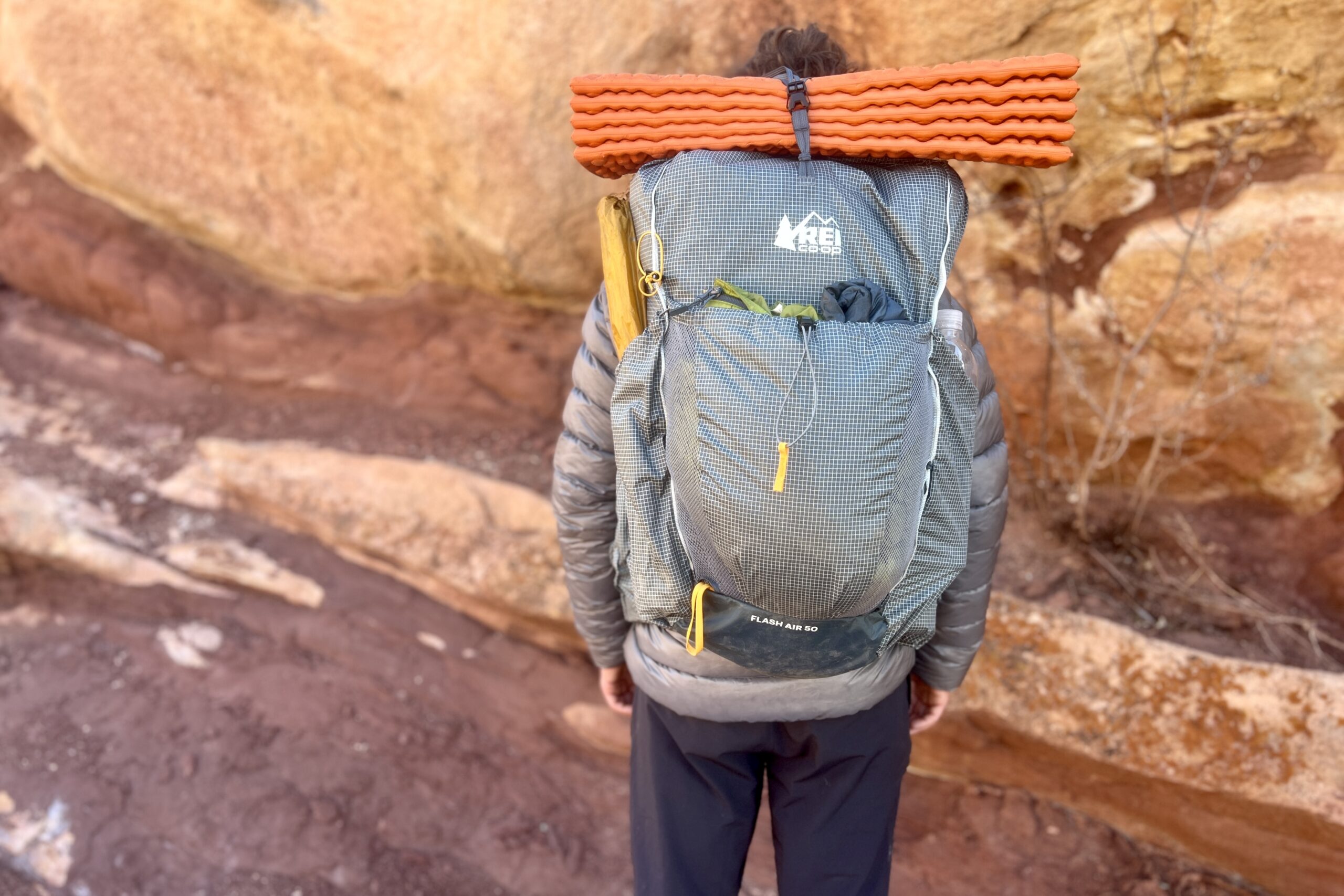
Bottom Line
The REI Flash Air (men’s / women’s) is an excellent crossover pack for those accustomed to a traditional pack but ready to transition to ultralight backpacking. Or you might have found ultralight packs aren’t working for your body, so you’re looking for a step up in support and comfort needs; this might be just the ticket. The suspension system consists of a stiff internal frame, a supportive hipbelt, and an over-padded back panel with airflow channels.
The Flash Air is made from lightweight nylon with a streamlined, weight-conscious feature set. The main front pocket is ideal for storing rain gear and daily essentials, although it’s a little on the small side. Instead, much of the pack’s real estate is taken up by four roomy side pockets, two of which are incredibly easy to reach for on-the-go hydration.
The Flash Air’s construction features lightweight durability with a reinforced 210D nylon bottom panel. The pack is waterproofed using a DWR coating, which will eventually wear off, but initially, it performs very well.
Overall, REI has done a great job filling a niche for people who are on the cusp of ultralight backpacking practices.
For more of our favorites, head back to our guide to the best ultralight backpacks.
Quick Specs
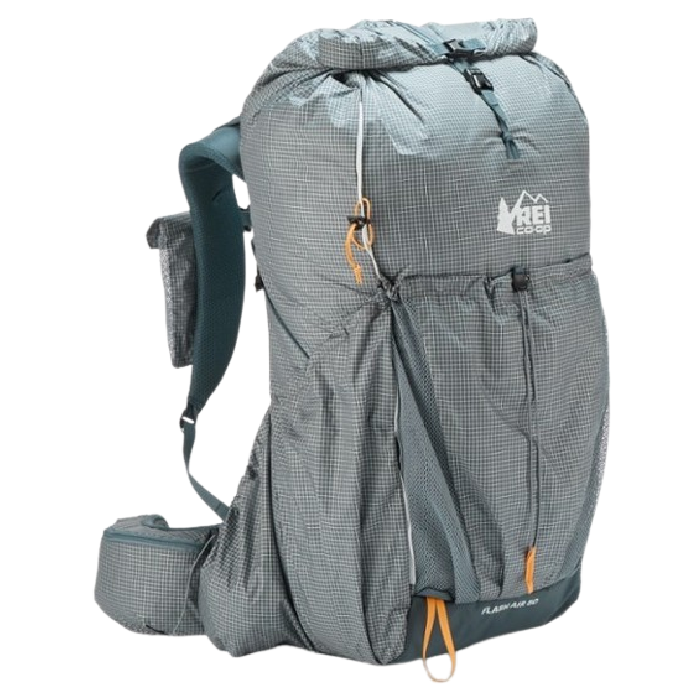
REI Flash Air 50
Best Crossover Backpack
CleverHiker Rating: 4.4/5.0
Price: $299
Weight: 1 lb. 14 oz.(medium)
Volume: 50 L
Max Weight Rec.: 25 lbs
Pros
- Lightweight
- Accessible side pockets
- Good intro to ultralight
- Men's/Women's specific
Cons
- Top and side straps not durable
- Hipbelt is uncomfortable for some
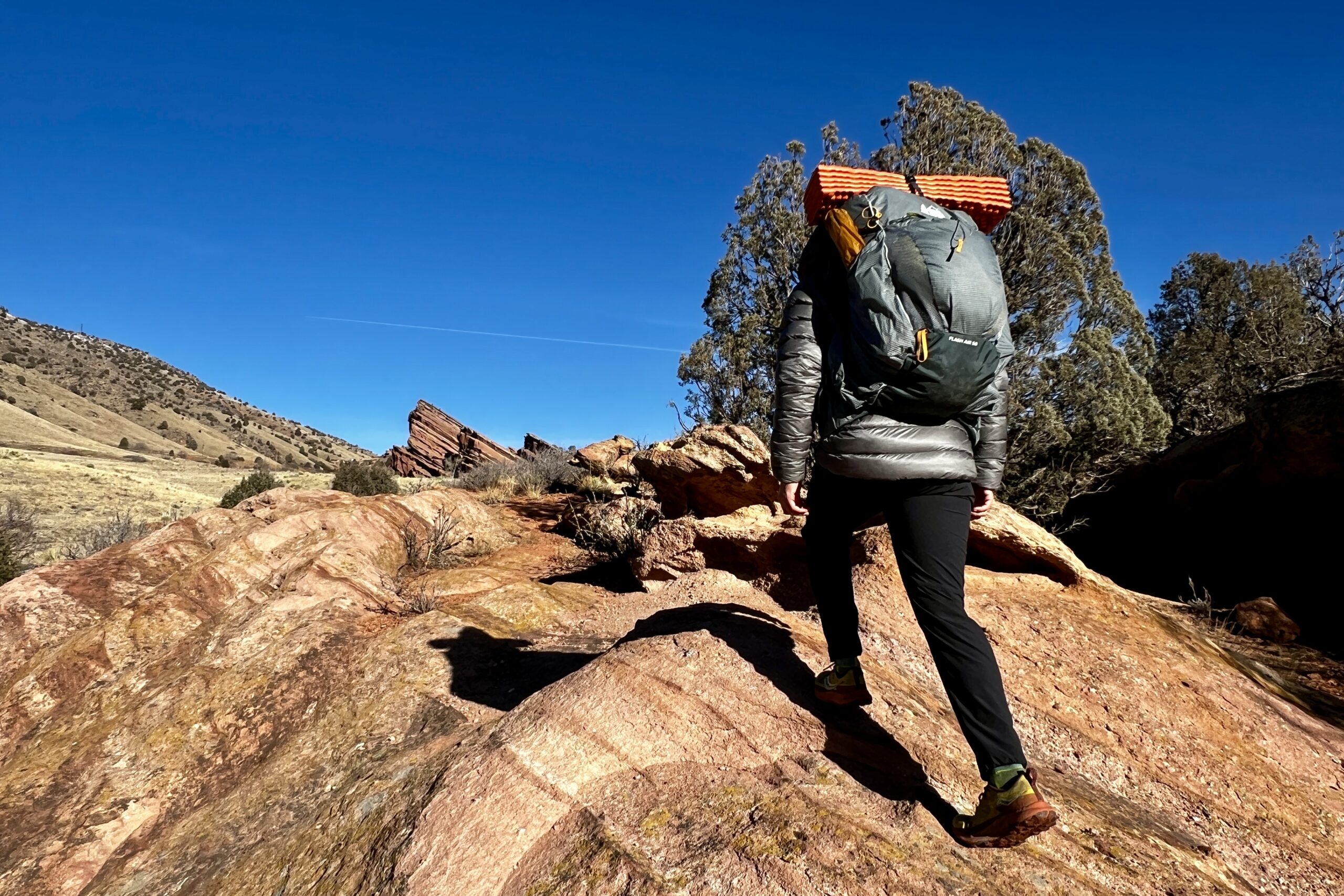
comfort
The comfort of the REI Flash Air 50 is reminiscent of traditional backpacking backpacks. It doesn’t compromise on foam padding and is engineered for optimum airflow.
During testing with about 30 pounds, the internal spring steel frame performed surprisingly well at transferring weight to the hips and relieving shoulder stress.
The load lifters further stabilized the pack, bringing weight closer to the body. Although REI recommends a maximum load of 25 pounds for this pack, we’re confident it can comfortably handle more.
Although the frame helps, most of the Flash Air’s comfort is derived from its well-padded back panel, shoulder straps, and hipbelt. The back panel and hipbelt feature ultra-thick foam padding complementing with channels for optimum airflow.
The 3D contoured hipbelt is rigid and holds its shape, common on traditional style backpacks. While the hipbelt is secure, some find its lack of flexibility can cause it to dig into the hip bones.
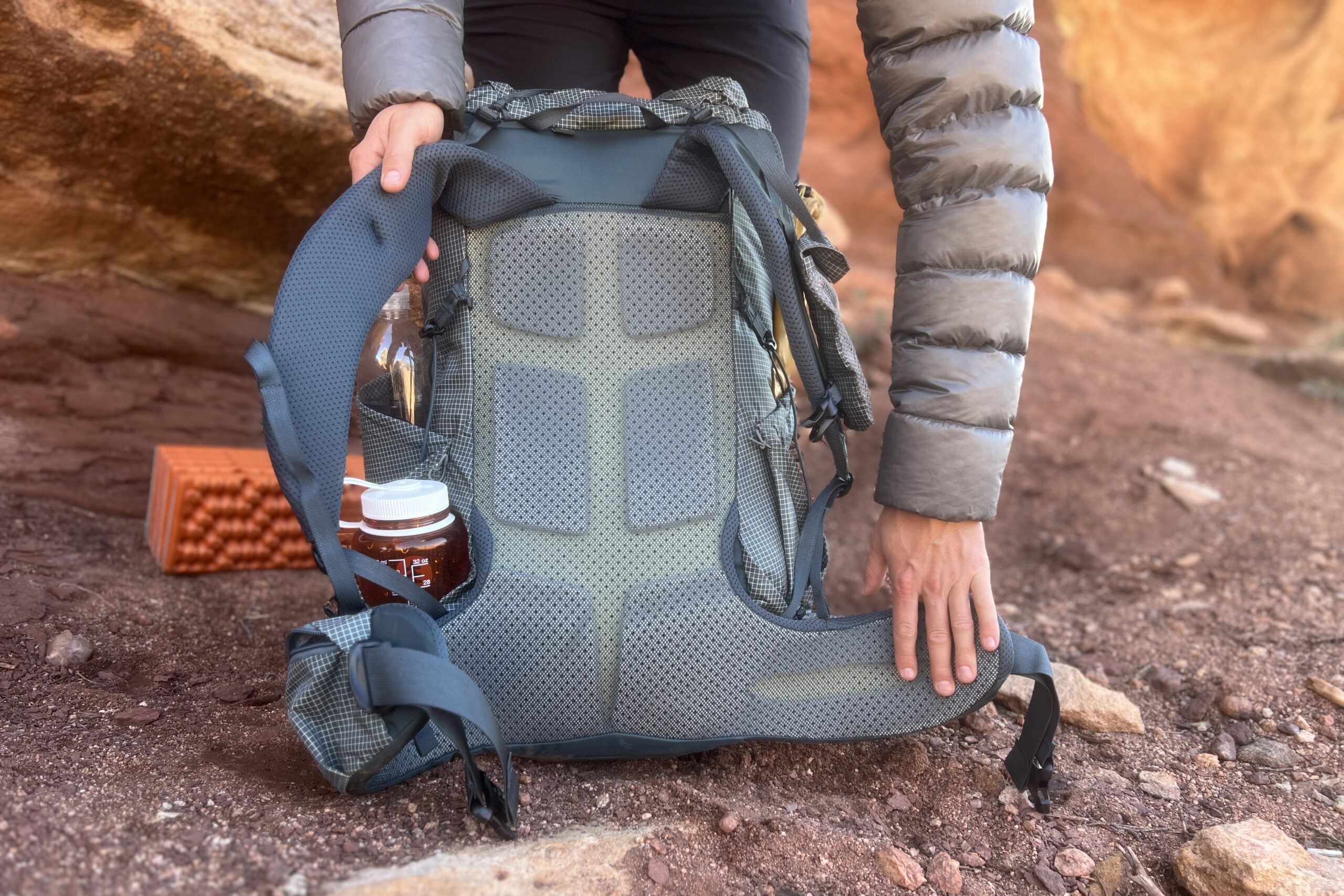
Functionality
The REI Flash Air incorporates thoughtful and unique design features that promote on-trail accessibility and efficiency. The most notable of these is the four side pockets. The two closest to the back panel are slanted and shifted forward, making them the most accessible side pockets that we tested. Each is big enough to hold a one-liter Nalgene bottle, so you can easily hydrate on the go.
The two additional side pockets are very tall and roomy—ideal for items like an umbrella, tent poles, or even a small backpacking tent. Continuous webbing daisy chains and an ice axe loop line these side pockets for exterior gear storage. The last major exterior pocket is the cinching front pocket, which we wish was bigger and stretchier.
The pack comes with a rectangular mesh shoulder strap pocket, which is great for small items but is too small for larger smartphones.
Our main gripe about the features on the Flash Air is the top and side straps. All are made with thin cord or webbing, which feels flimsy and gets tangled easily.
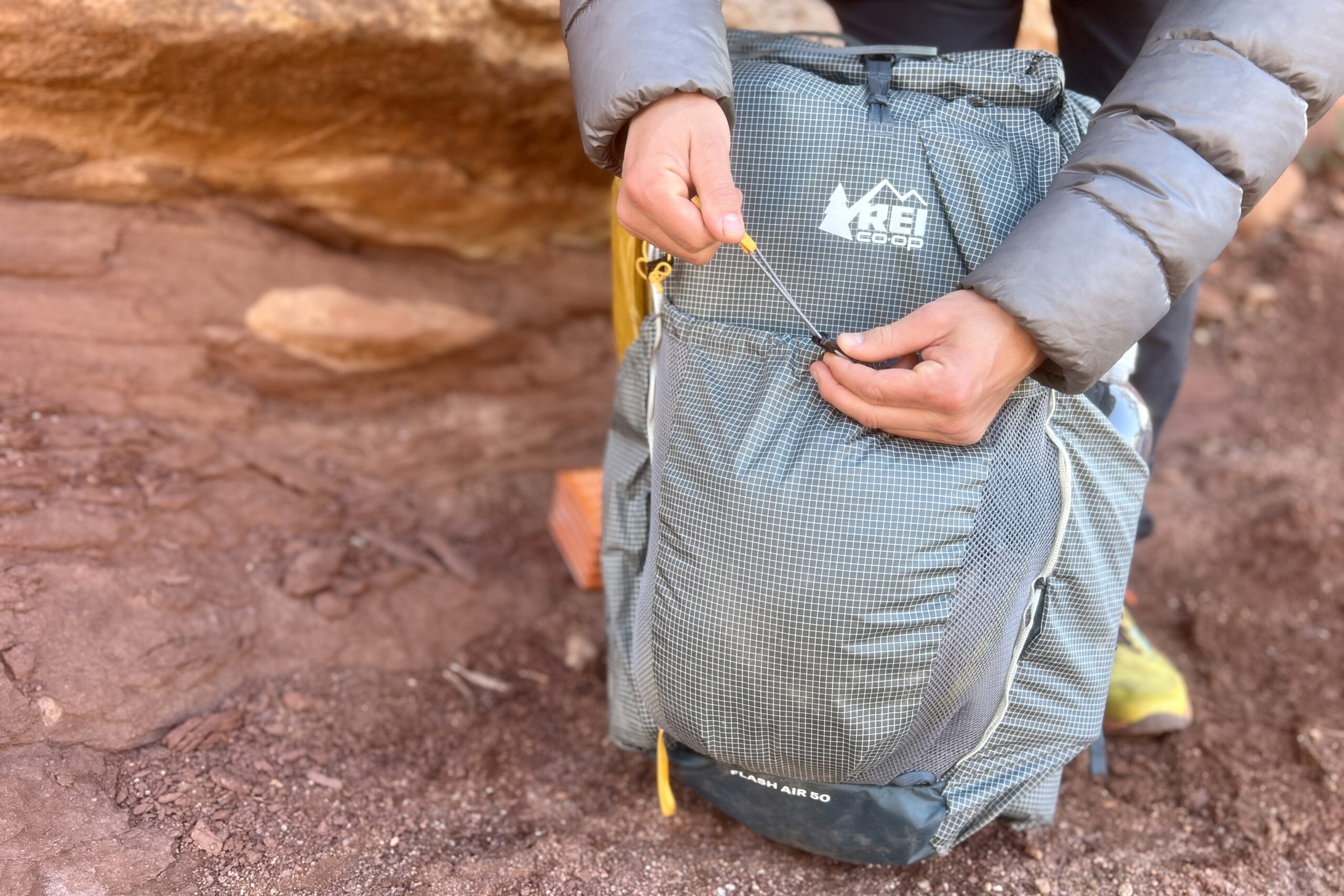
Water Resistance
The REI Flash Air demonstrated impressive water resistance during our exposure test. After drenching the pack on all sides, we found virtually zero moisture inside. Although we love keeping our gear dry, the Flash Air probably won’t remain that waterproof forever.
The pack’s nylon is not inherently waterproof, so REI added a DWR waterproof coating. While these coatings have decent longevity and waterproofing capabilities, they will wear off and eventually need to be reapplied.
Another interesting factor to note is the foam padding’s reaction to water. The foam readily absorbs moisture instead of wicking it away, which will contribute to excess pack weight from sweat and precipitation.
Overall, the pack is mostly waterproof early in its life, but we recommend pairing it with a pack liner or cover.
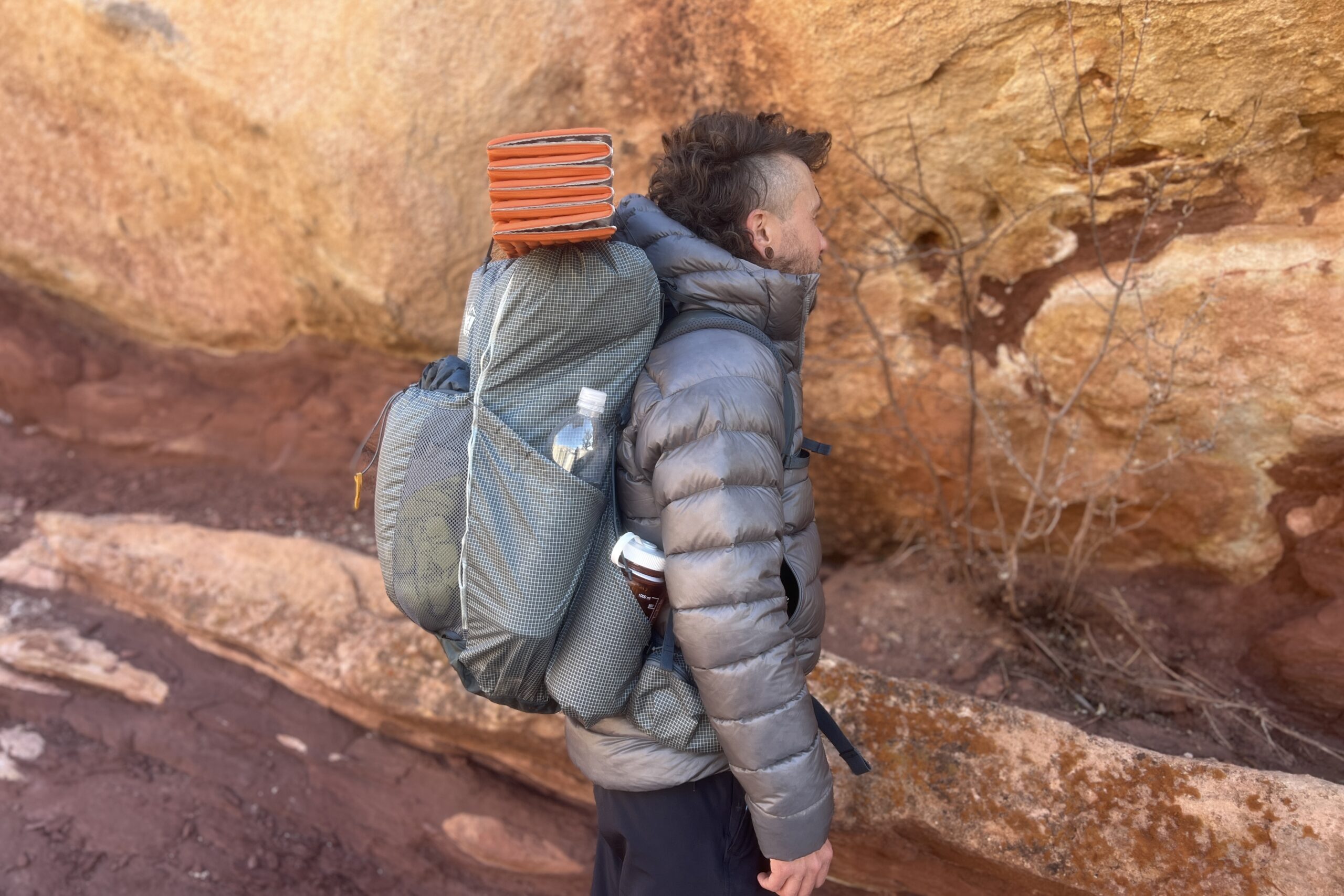
Construction
Although it’s not the most durable pack on the market, the REI Flash Air 50 blends lightweight construction with durability in key areas, ensuring it meets the demands of ultralight backpacking. At just 0.5 ounces per liter, it’s among the lightest packs we tested, yet its materials are robust enough to handle some abuse on trail.
The main body is made from UHMWPE ripstop nylon, a fabric prized for its exceptional strength-to-weight ratio and resistance to abrasion. This gives the pack a tough exterior that can withstand scrapes against rocks and branches. The bottom panel is reinforced with 210-denier nylon, which provides extra durability where the pack is most vulnerable to wear.
REI sacrifices a significant amount of durability in the side straps and top Y-strap. They are all thin and flimsy and could easily be cut while rock scrambling.
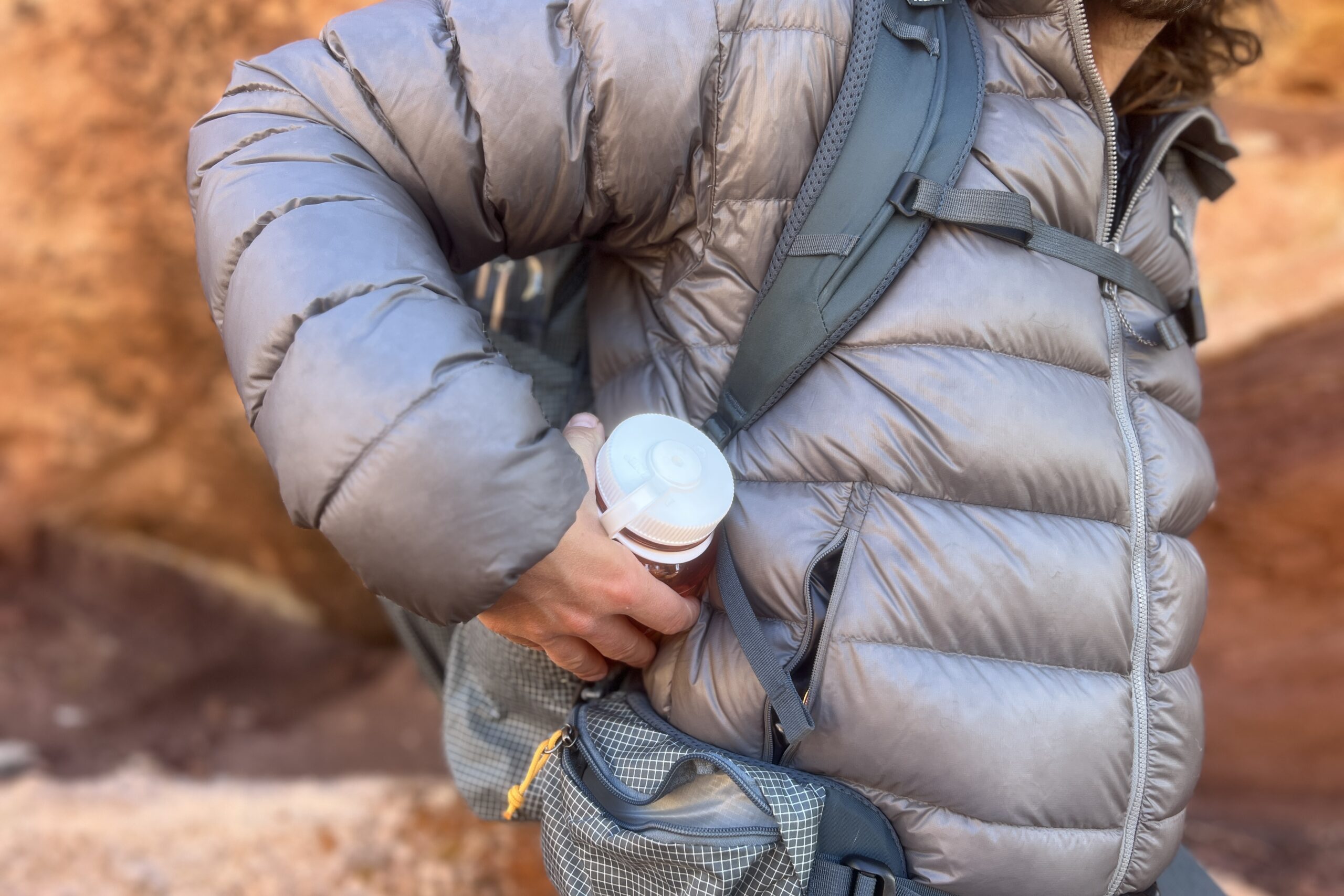
Should You Buy The REI Flash Air 50 Ultralight Backpack?
The REI Flash Air 50 is an ideal choice for backpackers new to the ultralight world and hesitant to give up their traditional pack. Its ample padded back panel, hipbelt, and shoulder straps provide couch-like comfort. While the rigid hipbelt may not work for everyone, it offers excellent load transfer and security.
REI incorporates unique and thoughtful trail-oriented features. Four accessible side pockets make hydration and organization easy, while external daisy chains and an ice axe loop offer versatility for extra gear.
Built with UHMWPE ripstop nylon and a reinforced bottom panel, the Flash Air 50 effectively balances durability and weight savings. That said, the top and side straps feel flimsy, making this pack less ideal for rugged off-trail scrambles or bushwhacking. Although the DWR coating is effective, we recommend using a pack liner, especially as the pack ages.
For those prioritizing weight savings, comfort, and smart design, the Flash Air 50 offers great value for thru-hikers and weekend adventurers alike. Seasoned ultralight backpackers, mountaineers, and scramblers might want to look elsewhere.
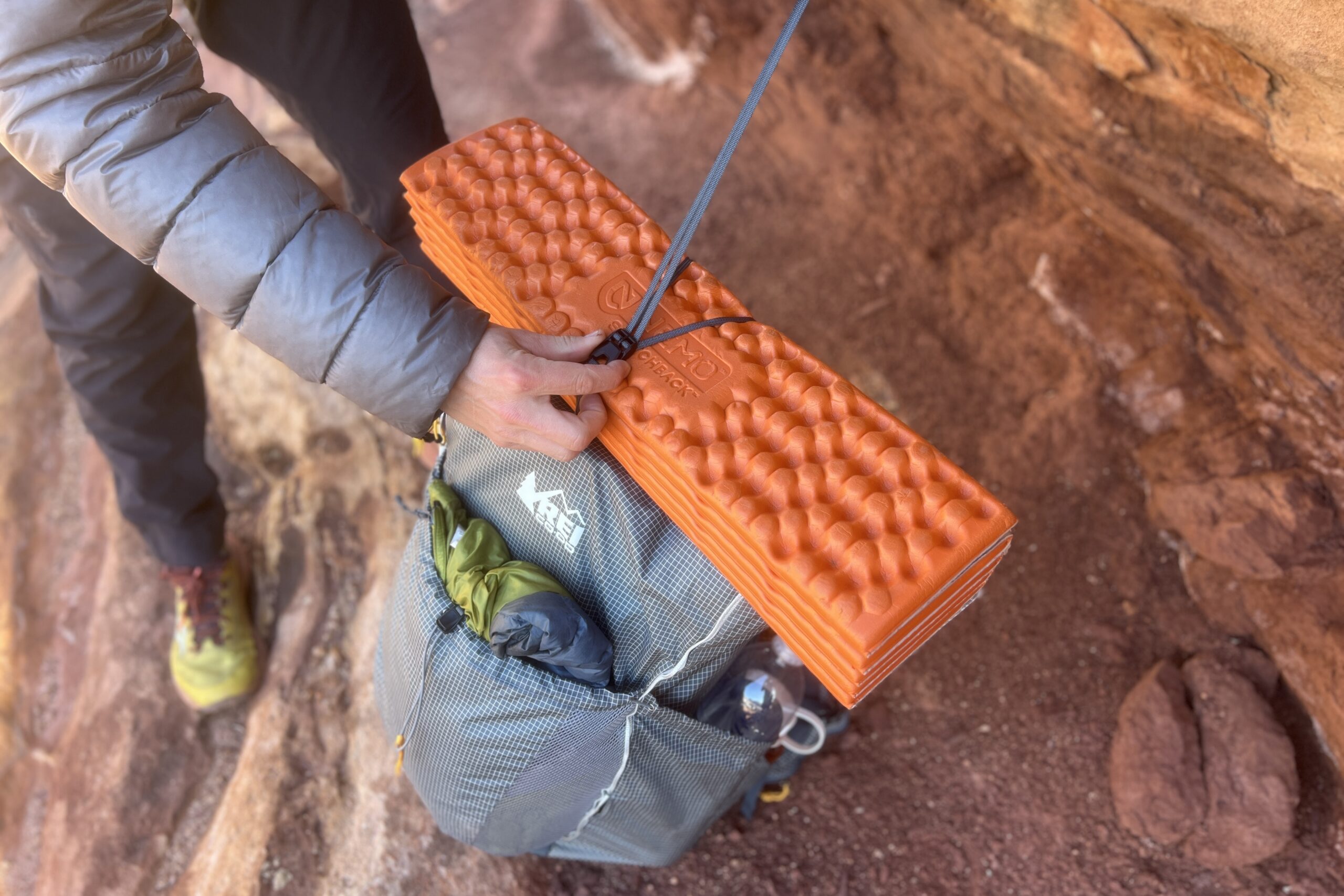
What Other Ultralight Backpacks Should You Consider?
If the Flash Air reminds you too much of the traditional style and you’re ready to dive more into ultralight backpacking, check out our full guide to the best ultralight backpacks.
Gossamer Gear Mariposa 60 Review: Gossamer Gear packs are known for their superior carrying comfort. They are heavily padded, like the REI Flash Air, but follow a more ultralight mentality.
Gossamer Gear Gorilla 50 Review: The Gorilla 50 is the same volume as the Flash Air, but with different unique features. It’s also very comfortable with a supportive hipbelt and frame but lacks water resistance.
Zpacks Arc Haul Ultra 60 Review: The Arc Haul offers more permanent water resistance than the Flash Air, with a physical moisture barrier instead of a coating. It’s very ultralight-focused and will lack some of the comfort features found in the Flash Air.
